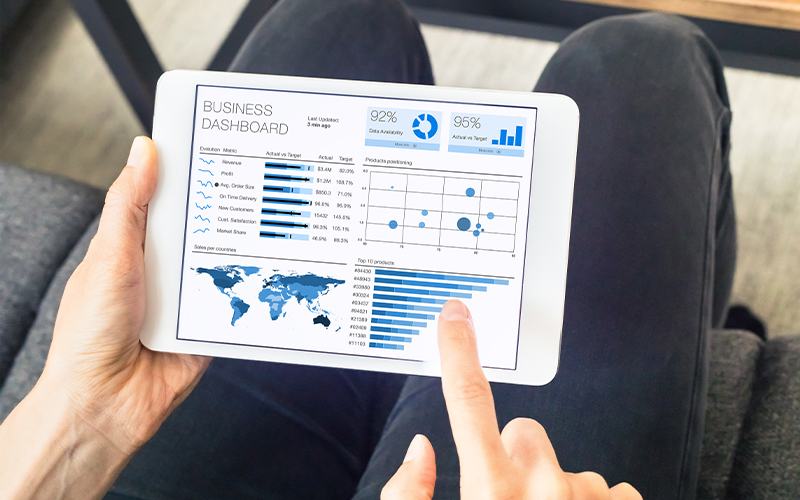BPM Analytics
The advantages of prescriptive analytics: From prediction to action
Be it healthcare, retail, sales, manufacturing, banking, or education, having huge volumes of raw data without actionable insights can leave any business in a state where analysis of data is meaningless.
But analytics is a vast field with varied applications. Businesses need to be aware of the type of analytics that suits their needs and investing in those skills and technologies that don’t yield tangible results is undesirable, to say the least, and leads to a loss of revenue.
Key benefits of descriptive and predictive analysis
Descriptive analytics depends on visualisation reporting and data mining to learn ‘what happened.’ Predictive analytics uses regression analysis and causal forecasting to determine the possible channels that a business can adopt to achieve an outcome. Here are some goals that you can achieve using descriptive and predictive analytics:
- Predict the likelihood of a churn or a conversion based on past levels of customer engagement.
- Run targeted product promotions for visitors based on previous website activity.
- Funnel down the lead and determine sales readiness using lead scoring.
- Identify campaigns, lead personas, and channel initiatives that drive the most revenue.
When descriptive and predictive analytics are not enough
The possible outcomes through descriptive and predictive analyses are not sufficient unless you can simulate them in-house and arrive at the best course of action. For instance, descriptive and predictive analytics are not designed to help you with the following:
- Streamline future marketing efforts.
- Resolve inconsistent results and gaps in marketing campaigns.
- Arrive at spend recommendations towards each product campaign for the most optimal results.
To better use marketing budgets, resource allocation, and ROI, you need to know the best course of action — the ‘what to do.’
And, that’s where prescriptive analytics comes in.
How prescriptive analysis fills the gap?
Once you predict a set of potential outcomes, prescriptive analytics helps control those outcomes, which are beneficial to your business in the long run. It helps you understand how and which variables can be choreographed to achieve the desired result. This will help businesses in responding to evolving changes in their environment while making real-time decisions.
The major disciplines of prescriptive analysis are operations research, machine learning (ML), natural language processing (NLP), and applied statistics, with many other sub-disciplines. They help in:
- Building repeatable and scalable processes: To accurately predict outcomes, one has to create an in-house simulated environment. Keeping up with the fluid nature of the market, prescriptive analytics builds off historical data and allows businesses to run what-if analysis quickly. Once the business has run multiple scenarios, it can adopt the most efficient option and quickly make it repeatable and scalable.
- Optimising business actions with monthly plans to meet ROI: Be it pricing, marketing, or sales, business owners can predict the course of action that can deliver optimal ROI.
- Removing underperforming channels: In a large business, underperforming sources of revenue often go unnoticed for too long. Prescriptive analytics lets you identify such channels quickly and take necessary actions. You can divert the budget to those products that deliver maximum returns.
- Achieving higher agility: By simulating and running different scenarios of sudden market shifts, you find the best ways to respond to those shifts quickly and to your advantage. You get to make near-time decisions instead of waiting for weeks.
- Creating long-term strategies: Prescriptive analytics removes data silos and brings teams together in a collaborative model for the long run.
- Managing risk management: By answering complex questions related to demand and supply, your business can optimise investments and reduce risk.
- Fighting retail fraud: Prescriptive analytics is taking the guesswork out of fraud management. Especially after the pandemic, retailers are identifying fraud impact and using data and tools to detect fraudulent e-commerce returns claims and minimise cashier fraud in stores.
Knowing the right solution to the problem is half the battle won. At Infosys BPM, we’ve got more than just the know-how. For organizations on the digital transformation journey, agility is key in responding to a rapidly changing technology and business landscape. Now more than ever, it is crucial to deliver and exceed on organizational expectations with a robust digital mindset backed by innovation. This is where understanding the benefits of prescriptive analytics becomes invaluable. Enabling businesses to sense, learn, respond, and evolve like a living organism, will be imperative for business excellence going forward. A comprehensive, yet modular suite of services is doing exactly that. Equipping organizations with intuitive decision-making automatically at scale, actionable insights based on real-time solutions, anytime/anywhere experience, and in-depth data visibility across functions leading to hyper-productivity, Live Enterprise is building connected organizations that are innovating collaboratively for the future.
How Infosys BPM leverages the benefits of perspective analytics?
We help you target and achieve business outcomes with our in-house experts, domain expertise and industry-leading business intelligence tools. We bring analytics-as-a service, with advisory to model development, support, maintenance and enhancements, and statistics/data science.
Our offerings include:
- Procurement transformation
- Technological assessment for digital procurement
- Spend analytics
- Opportunity and capability assessment
- Consulting and training
- Embedded analytics
- Fraud management
Go from just predictions to assured action with our range of BPM analytics services.







